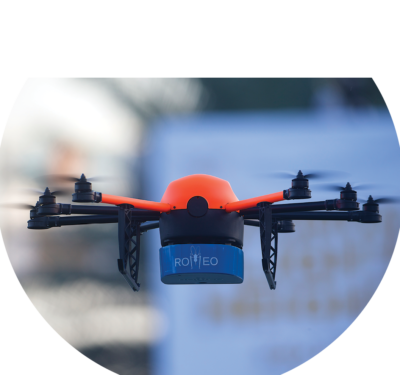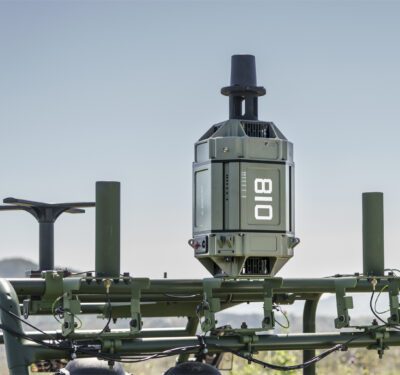The Department of Energy’s early-stage funder incubates a host of technology projects, including for UAS.

Energy saved is energy gained. That could be the mantra of the Advanced Research Projects Agency-Energy (ARPA-E), a unit of the U.S. Department of Energy.
ARPA-E supports early-stage energy technologies that could change the way Americans get, use and store energy. Since its founding in 2007, ARPA-E has funded more than 1,326 energy technology projects over 60 focused programs, with awards of $2 to $3 million over several years. Projects have attracted more than $10.3 billion in private-sector follow-on funding, and 131 ARPA-E project teams have formed new companies to advance the granted technologies.
“We’re basically the high risk, high reward research arm of the DOE,” said Dr. Jennifer Gerbi, the agency’s acting director. “We’re very mission-driven and that mission is twofold: One is to essentially solve energy problems for the country and the other is the United States’ R&D competitiveness.
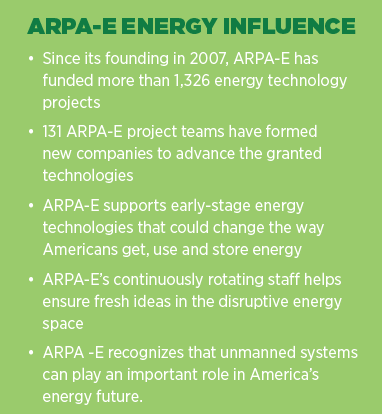
“Reducing imports is in our mission and so is reducing energy-related emissions,” Gerbi added. “We don’t do one thing if it hurts another thing, so we don’t work on oil and gas exploration, for example, because that would hurt the emission side.”
ARPA-E’s structure is based on a model pioneered by DARPA (the Defense Advanced Research Projects Agency), which focuses on national security. “At the end of the day, our goal is to see the tech commercialized,” Gerbi continued. “ARPA-E’s unique Technology-to Market program often means the private company is involved from the beginning.”
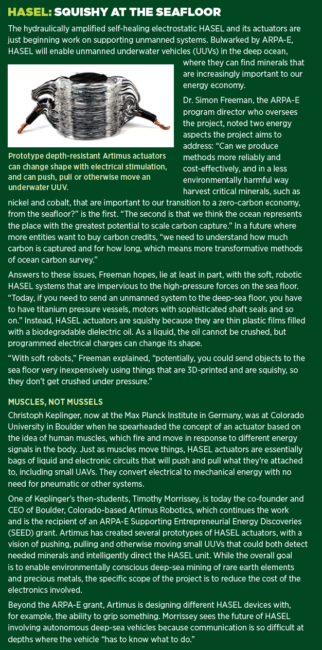
ROBOTICS TAKE THE FIELD
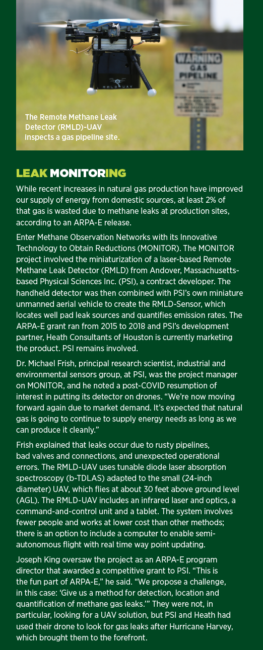
TERRA-MEPP (Mobile Energy Crop Phenotyping Platform) is one of many ARPA-E’s energy-related projects. TERRA-MEPP is a small, semi-autonomous ground-based vehicle that can row-scan thousands of plants per minute. Developed at the University of Illinois Urbana-Champaign, the project has since spun off into Champaign, Illinois-based EarthSense, which, in keeping with ARPA-E protocol, was involved from the beginning and has refined the system and expanded its species capabilities.
Dr. Girish Chowdhary, associate professor, agricultural and biological engineering at the U of I, oversaw much of the technical work on TERRA-MEPP and is today the co-founder and CTO of EarthSense. The unit, he claimed, “will go 10 times faster than other methods and provide 100 times more data.” The energy implication is two-fold: lowering the energy cost of producing food and fostering crops that sequester more carbon from the air to turn into biofuels.”
PASSION-FUELED FOCUS
As ARPA-E funds energy projects, its own energy comes from its ability to focus the passion of its program directors and project leaders on the energy challenges the U.S. faces now and in the future. “We’re always hiring because program directors are here on a term-limited basis and they cycle out continuously in three to five years,” Gerbi explained. “We have small and large businesses, national labs, academia and more on our teams.”
And significant praise has come from outside the organization. As FedEX founder Fred Smith said per ARPA-E literature: “Pound for pound, dollar for dollar, it’s hard to find a more effective thing government has done than ARPA-E.”


